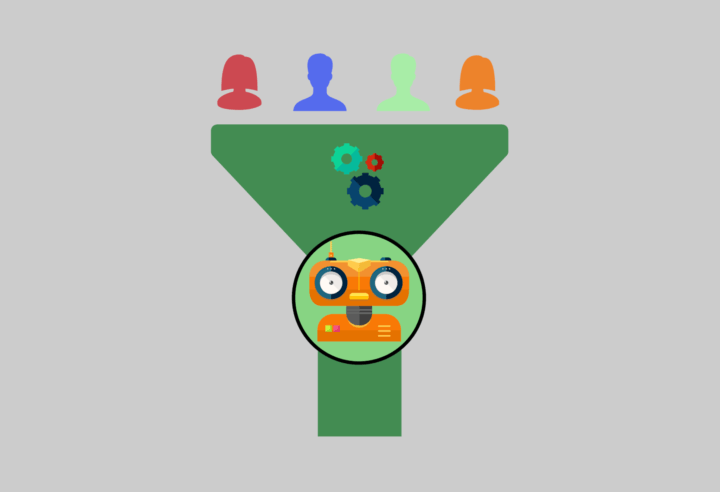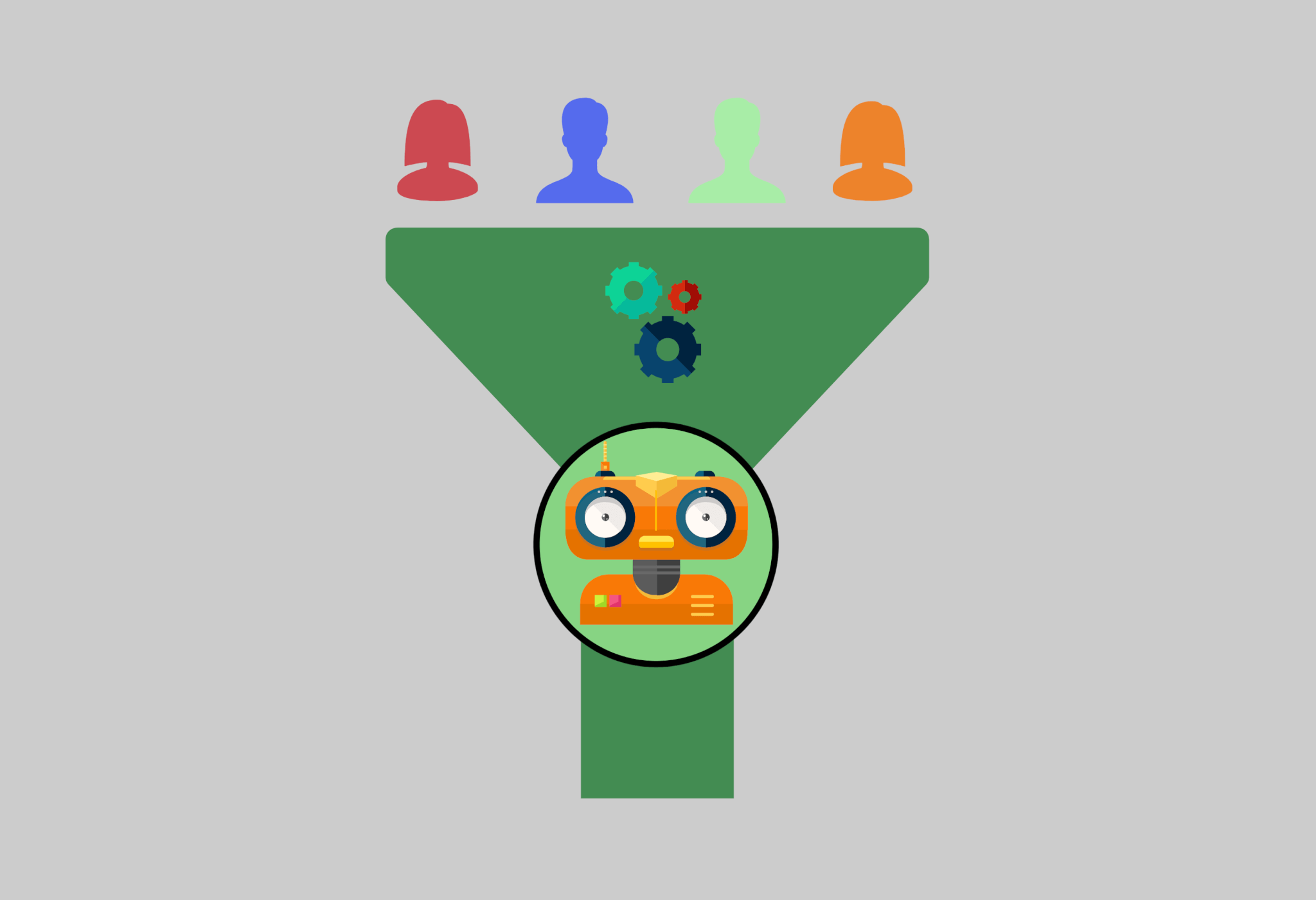The sales funnel — the process potential customers go through when making buying decisions — has played an integral part of marketing and sales for quite some time. While the basic principles of the funnel have stayed close to the same, many of the tactics marketers use to move leads through it have changed. One recent maneuver is to utilize a chatbot.
For many of today’s businesses, artificial intelligence and automation play a significant role in this movement. Web-based technologies allow companies to collect huge amounts of data on potential and current customers — so much it would take human analysts too long to sift through it.
Artificial intelligence, on the other hand, can make sense of this data and use it to predict what actions customers might take in the future. This gives marketers and salespeople more information on what they need to move a lead through the sales funnel.
One common way companies collect customer data is through chatbots. These virtual customer service representatives and salespeople communicate with people via instant messaging and help initiate them into the sales process. They can answer customer questions, collect data on people’s interests and even suggest products to them.
In fact, chatbots can help lead customers through virtually every part of the sales funnel. Although definitions of the sales funnel vary, four commonly included phases are:
- Awareness
- Interest
- Decision
- Action
Let’s walk through these four steps and explore what roles chatbots can play in them.

1. Awareness
Awareness is the stage in which a consumer first finds out a product or service exists. They can arrive at this stage through a variety of means, including email, social media, online video, television advertisements, and now possibly chatbots.
Where Companies Deploy Chatbots
Although most businesses’ chatbots exist on their website, some of them also operate through popular messaging apps like Facebook Messenger, Twitter and Kik. If this is the case, a social media user might discover the bot while browsing a social site, especially if they or a friend like the company’s page.
In most cases though, someone will come to a website via one of these various pathways and then encounter a chatbot. Typically, the bot will wait a short while so the customer can familiarize themselves with the site and then pop up and ask them a basic question, such as if they need help finding anything. These bots could even be customized based on how the visitor got on the site or what landing page they’re on.
The Importance of Creating Relationships
Establishing a relationship is crucial to moving possible customers through the sales funnel. Bots do this by initiating a conversation, causing the visitor to engage with the brand. This is powerful, even if they’re just talking with a computer program at first.
Manually reaching out to every visitor on your website could be time-consuming, and some businesses might not have the resources to do it. Using these automated programs enables you to connect with every lead.
You could use a bot to communicate with five people or 500 people, and the cost wouldn’t be any higher. You just need to make the initial investment of developing and deploying the bot.
2. Interest
During the next stage of the funnel, the lead begins to show interest in a company’s product or service by seeking out more information about it. They might conduct online research, request information be emailed to them or ask a salesperson questions.
Chatbots can handle many of these preliminary questions, at least the most commonly asked ones. If they’re familiar with the query, they’ll provide the answer. If not, they’ll connect them to a company representative that does know the answer.
Customer Service in an Always-On World
In today’s world, customers want to interact with companies on their schedule. In fact, 51 percent of people say they want businesses to be accessible 24/7. Thanks to the internet, they have so many options that they can make such a demand.
Chatbots can address this demand without significant additional effort or resources from the company. Chatbots are available at all times. Even if they can’t answer a certain question and no human representatives are available, they can forward the query to a rep to be answered first thing the next day.
Increased Convenience and Customer Satisfaction
The quick response times that automated messengers offer can also be valuable during regular business hours. If a salesperson has inquiries from multiple clients at once, they won’t provide immediate responses to all of them. Chatbots, on the other hand, can.
Automatic messaging also has the advantage of being less intrusive than other communication methods. It doesn’t require the user to open a dedicated app, because it operates via another messenger app or the company website. It also doesn’t take up as much of the customer’s time as a phone call and is less intrusive than even email. Almost half of consumers say they’d rather use a bot to chat with a company than email or phone.
Chatbots can also help to pique interest in additional products and services beyond what the customer originally had interest in. For example, a bot could use someone’s purchase or web browsing history to identify products similar to the ones they showed interest in before but might not have been aware of.
3. Decision
The decision phase brings the lead closer to making a purchase. In this stage, they decide whether they will pursue making a purchase from the company in question.
To get people to make this decision, marketers present them with a variety of advertisements and informational content. Chatbots can help with this stage both directly and indirectly.
Bots as Part of Your Sales Team
Bots may provide leads with information to help them make a purchase decision. They might answer questions the individual asks or send them content of their own accord. They can figure out what info to send along based on the person’s past interactions with the company and the typical questions others ask at this stage in the sales funnel.
Based on the information the bots gather, they’ll typically send the lead through to a human salesperson at some point during this stage.
Bots as Part of Your Marketing Team
Marketers might also use the data the chat systems collect to determine what content to provide the lead with. Comparing the lead’s preferences and concerns with data on past customers can help marketers predict what will convince the lead to make a purchase.
Using AI helps to make this part of the process more efficient and can save the company resources. By gathering data on leads, chatbots can assist marketers in identifying the most qualified leads, those most likely to make a purchase. This information helps the company to dedicate their resources to the leads that will bring in revenue.
By gathering data on leads, chatbots can assist marketers in identifying the most qualified leads. Share on XBy answering initial questions and gathering data, the bots help to weed out unqualified leads. Human workers no longer have to spend their time on those that will never convert and can instead focus their efforts on those truly interested in what the business has to offer.
4. Action
The final part of the sales funnel is the point at which the customer takes the action the company wants them to. Typically, this action is making a purchase. At this point in the sales funnel, a human typically takes over to facilitate the sale. Sometimes with smaller purchases, though, customers can make a purchase directly through the bot.
Some sales funnels, particularly those of B2B companies, offer other steps after this stage. In the reevaluation phase, the B2B customer will consider whether they want to renew their contract or subscription. In non-subscription sales, the company aims to make a one-time customer a repeat customer.
The Importance of Data
During this period, the data the company collected on the customer will be crucial. The marketing and sales team will use this data, including the information collected through chatbots, to introduce their strategy for marketing to the current customer.
The company might also communicate with the current client through chatbots if they visit the website or through messaging apps. The bot could remind the individual it’s time for a subscription renewal or send them marketing or informational materials.
Based on the person’s purchase history, the bot can also suggest other items that might interest them. If an e-commerce shopper left a product sitting in their cart, it might remind them of the purchase they considered.
If the marketing and sales teams are successful, the customer will move into the re-purchase phase. The company will then collect and store that data for later sales and marketing efforts.
Use Chatbots to Grow Your Business
Companies of any size and in any industry can use chatbots to help move leads through their sales funnel, increase customer satisfaction and improve their bottom lines. They can help you turn leads into customers more efficiently and provide you with data you can use to inform about your marketing and sales efforts.
Whether you decide to develop your chatbot on your own or hire someone to make it for you, you should first define your sales funnel and target audience. Once you’ve done that, you’re on your way to moving customers through your sales funnel with the help of artificial intelligence. Even if you just make a simple bot to start out, you’ll likely see business growth that makes your efforts well worth it.
Want to help contribute to future articles? Have data-backed and tactical advice to share? I’d love to hear from you!
We have over 60,000 monthly readers that would love to see it! Contact us and let's discuss your ideas!

